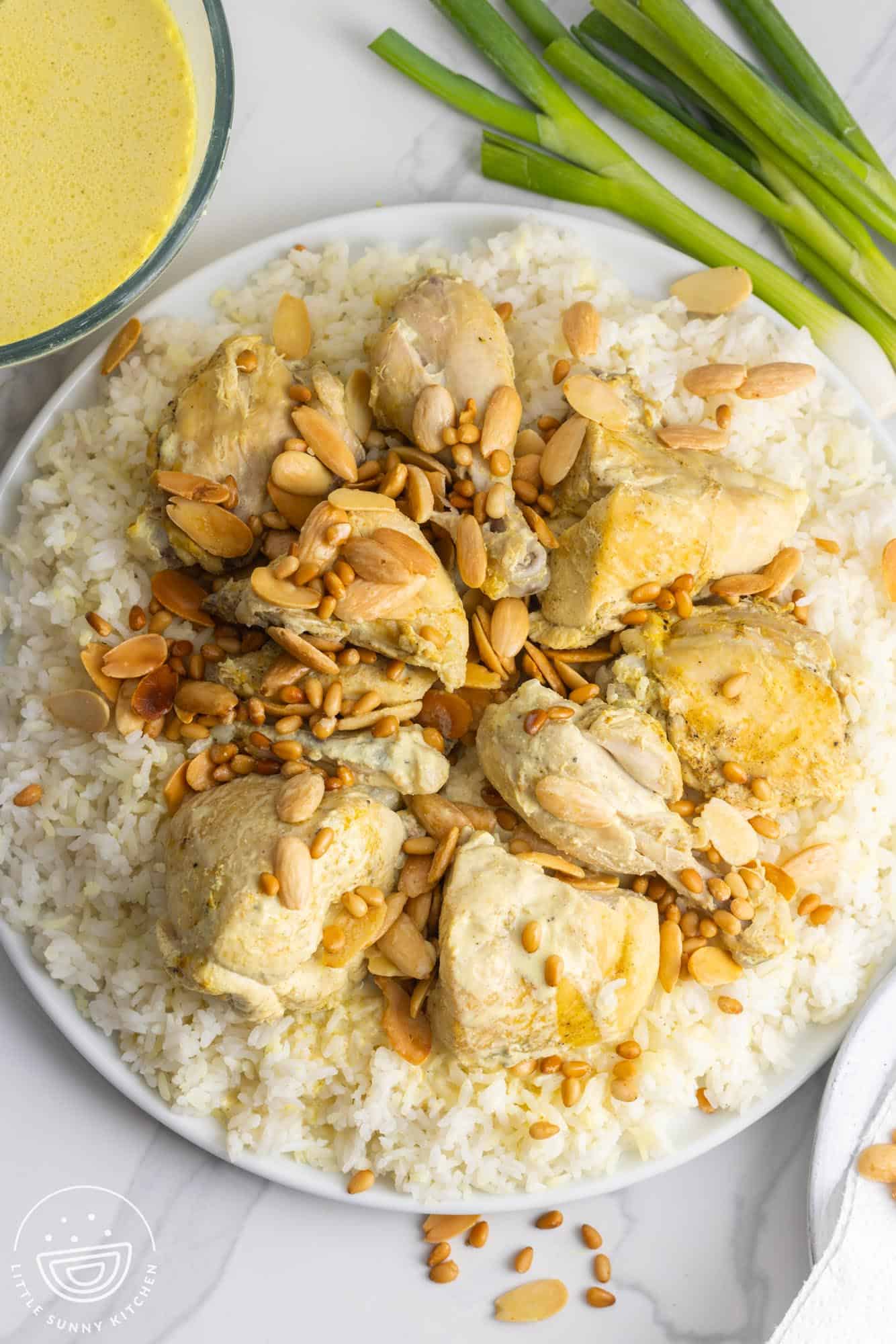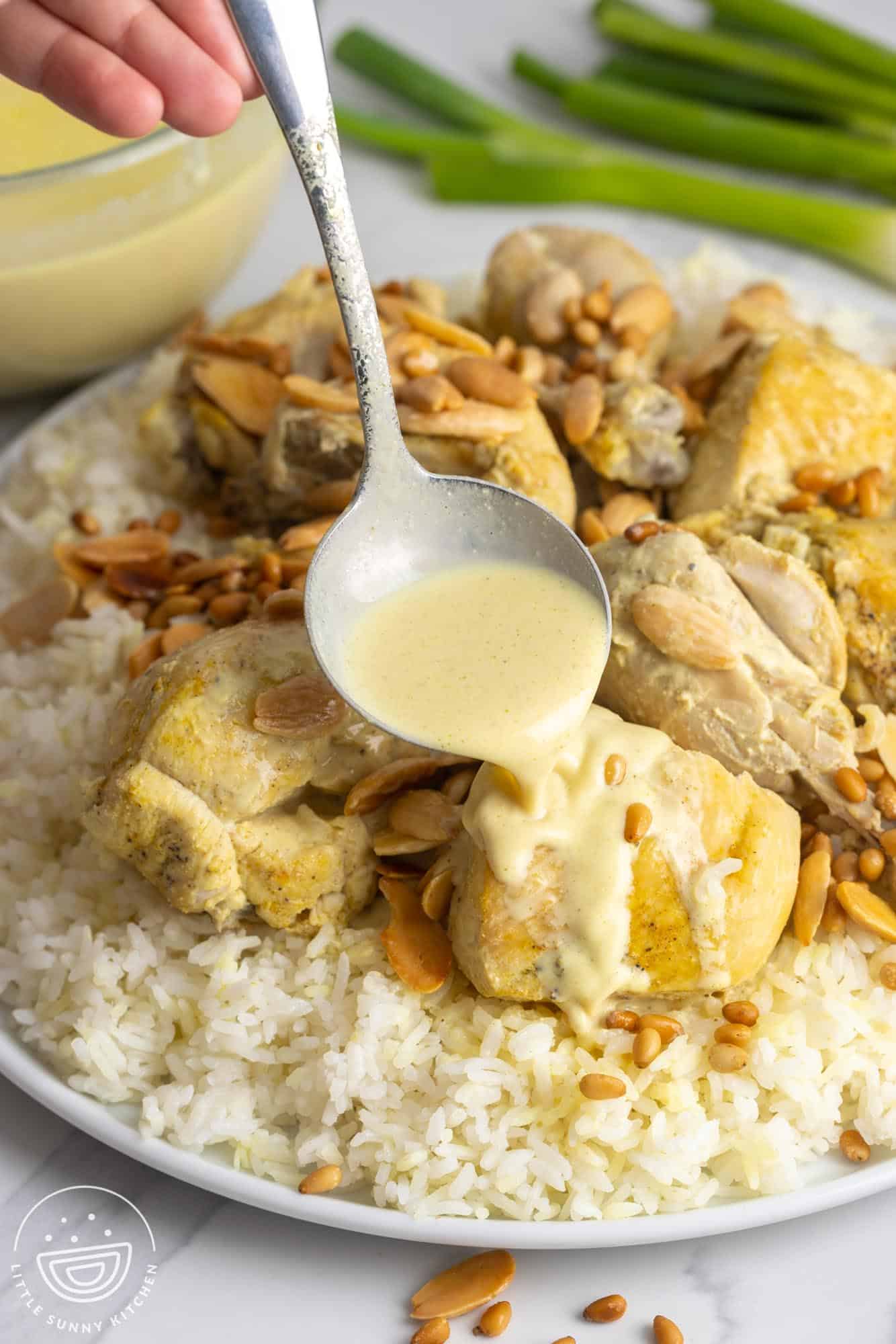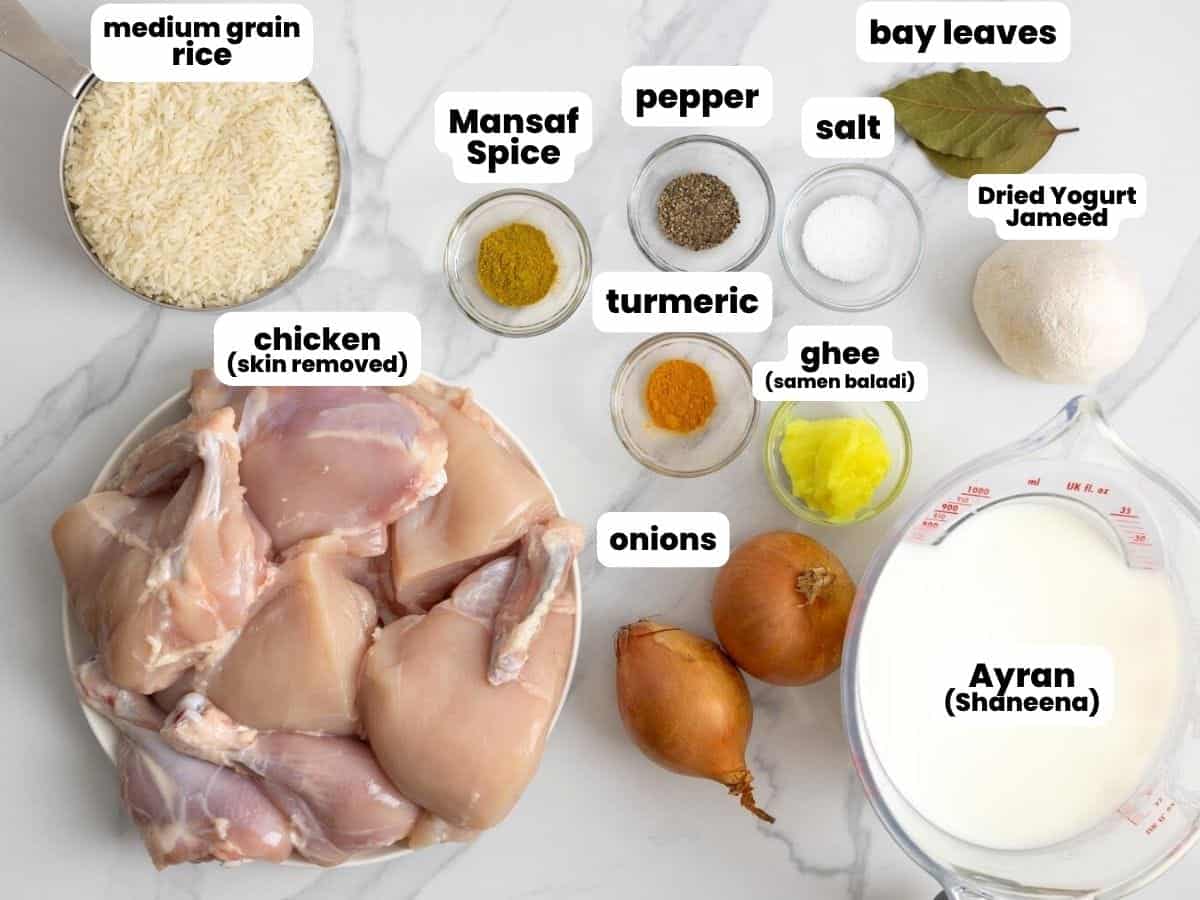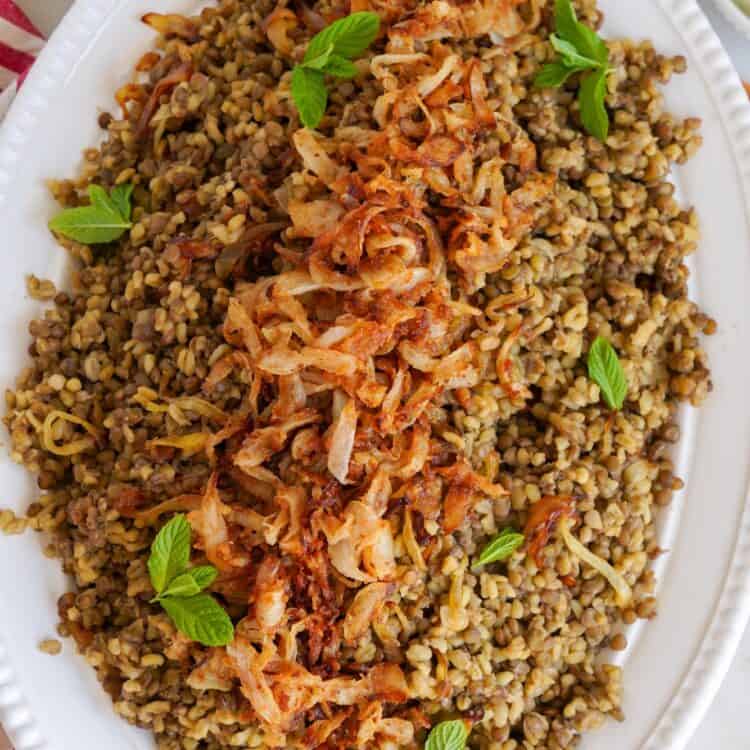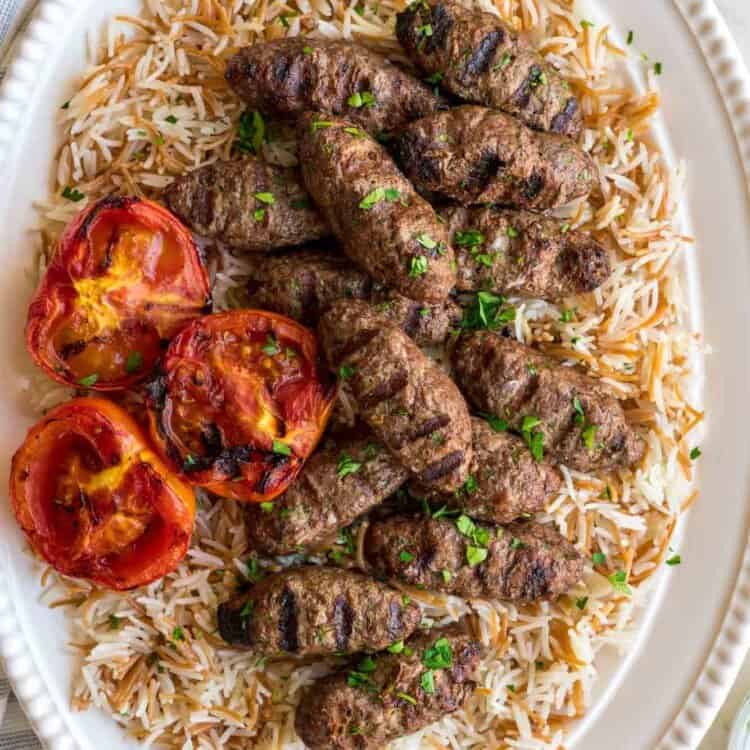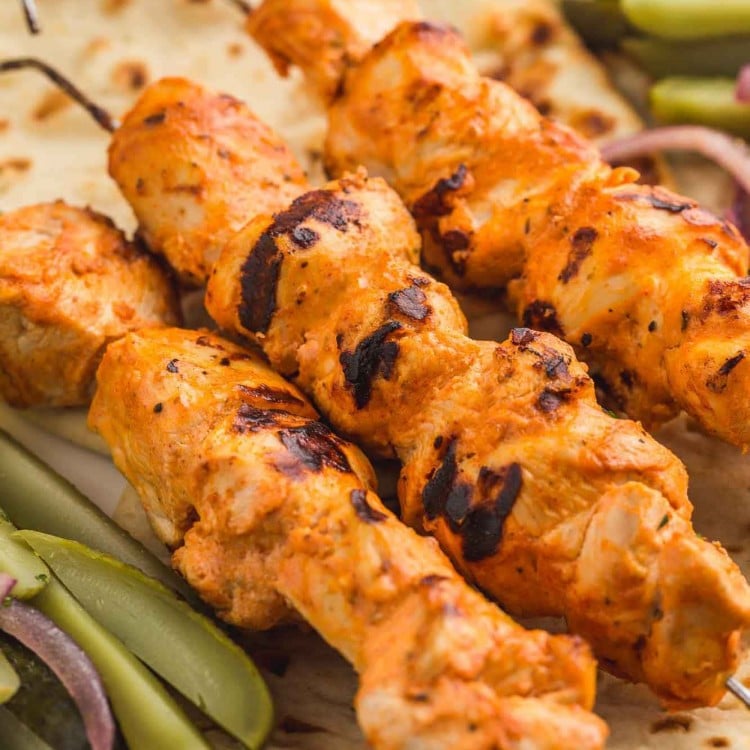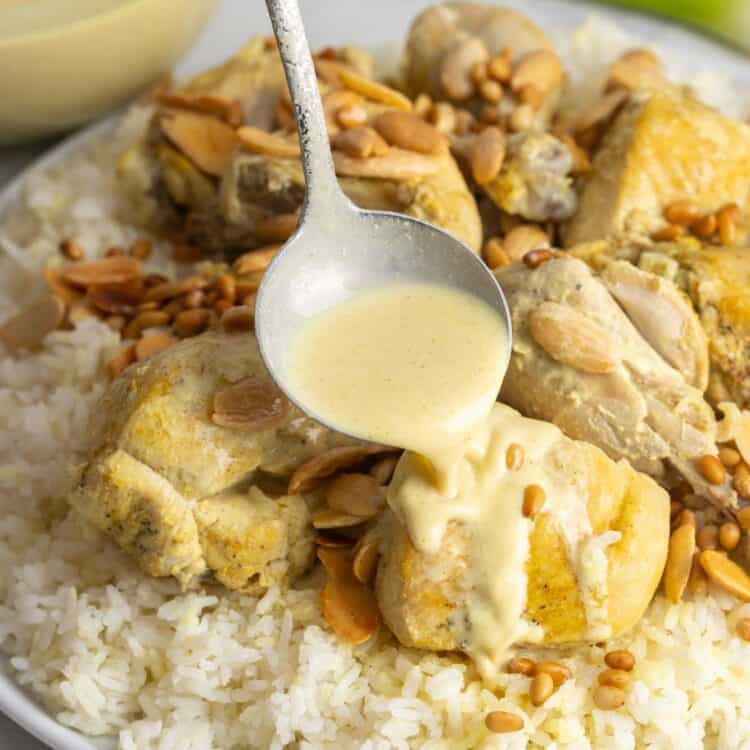Cuisine: Jordanian Difficult Level: Easy, streamlined recipe but requires specialty ingredients Authenticity: Authentic (My Grandmother’s Recipe from Madaba, Jordan)
What Is Mansaf?
Mansaf is a traditional Jordanian dish that is deeply rooted in the culture and history of Jordan. It is typically made with lamb or chicken cooked in a sauce made from fermented dried yogurt called jameed. The meat and sauce are served over a bed of rice and garnished with toasted nuts. Lamb Mansaf is often served on special occasions and is considered the national dish of Jordan, symbolizing hospitality and generosity. Chicken Mansaf is a more casual version of the traditional lamb Mansaf. Considering that chicken is cheaper and more readily available, it has become a popular choice for weeknight dinners that families can make. This recipe is one I grew up eating, passed down to me from my grandmother on my dad’s side. My mother always says that my grandmother’s Mansaf was the best she ever had. With this recipe, you can enjoy the same authentic taste of Jordanian Mansaf in your own home.
What is Jameed and How Do You Make the Yogurt Sauce?
Jameed is a key ingredient in traditional Jordanian Mansaf. It is a type of dried yogurt made from fermented goat’s or sheep’s milk. The yogurt is salted and then dried into hard balls, which extends the dairy shelf life from days to years. Jameed has a tangy, umami, intense flavor that gives Mansaf its distinctive taste. While Jameed can be sourced from most places in Jordan, the most popular choice is Jameed Karaki, which comes from the Karak region. This area is renowned for producing high-quality Jameed, which is often considered the best in the country. Making the Jameed Yogurt Sauce involves rehydrating the dried yogurt and turning it into a rich, creamy sauce. Start by rinsing the jameed, then soaking in warm water for several hours or overnight until it becomes soft. Once rehydrated, blend the jameed with some water to create a sauce that is similar to heavy cream in terms of consistency. In a pot, combine the jameed sauce with Ayran, if using, and stir regularly until it boils. If you’re using jameed only, you don’t need to stir as much, but if you’re mixing jameed with Ayran, if you don’t stir continuously, it can curdle. Once it’s brought to a boil, you’re safe and don’t need to keep stirring.
Ingredients In Chicken Mansaf
Here’s what you need to make an authentic chicken mansaf at home: Complete list of ingredients and amounts can be found in the recipe card below.
Jameed: You can either use dried Jameed balls that need to be rehydrated and then blended until smooth, or you can buy liquid Jameed, where the work is already done for you. If you can’t find Jameed, you can use Ayran (Shaneena), or even plain yogurt with a pinch of salt. You can also substitute Jameed with Persian Kashk, or Kurt, which is commonly used in central Asian cuisines like Kazakhstan, Uzbekistan, and Kyrgyzstan. If you are wondering what Jameed tastes like, it’s savory, tangy, and umami, and the closest ingredient to it in terms of taste is pecorino romano. Chicken: I usually use a whole chicken that I cut into 8 or 10 pieces, with all skin removed. You can use any chicken pieces that you like. I have an excellent tutorial on how to cut a whole chicken if you need help! Rice: Jordan’s preferred rice for Mansaf is calrose (medium-grain rice). Popular brands are Sun White Rice and Tiger Rice. If you can’t find Calrose rice, go for long-grain rice, but avoid basmati as it’s too dry to hold the yogurt sauce. I have used a mix of Egyptian and Jasmine rice, which worked very well. Spices: While the dish can be made with a simple mix of salt, pepper, and turmeric, using a Mansaf spice blend can elevate it to a whole new level. If you can’t find it, you can skip it. Mansaf spice is made with a mix of turmeric, fenugreek, and handagoog herb (sweet clover/melilot) which is local to Jordan. Ghee (Samneh): You can use plain ghee if that is all you have available, but Samen Baladi is clarified butter mixed with Mansaf spice to get the best aroma and bright yellow color. Nuts: Traditionally, you garnish the rice and the chicken (or meat) with nuts fried in ghee. Go for blanched almond halves or slivered almonds and/or pine nuts. You can fry them until golden in ghee or vegetable oil. Bread: Mansaf is served on a large (most commonly stainless steel or aluminum) serving plate lined with Shrak bread. This is a traditional Jordanian wheat bread that is thinner than a tortilla. The bread can be optional if you’re not doing a large serving platter.
How To Make Chicken Mansaf
Finally, to assemble the Mansaf. If you have Shrak bread, spread it on a large platter, then spoon the fluffed rice all over it. Top with chicken pieces in the center of the plate, then sprinkle with fried nuts. More on how to serve/eat Mansaf below.
How to Eat Mansaf
Mansaf can be enjoyed in various ways. Traditionally, it is eaten by hand, especially during large gatherings and special events. However, in modern family settings, it is often served on individual plates for convenience.
Storing Tips
Fridge: If you have leftovers, you can store the chicken and the rice in an airtight container in the fridge for 3-4 days. The yogurt sauce can be stored in the fridge for 7 days. Freezer: I recommend freezing the chicken and rice separately from the yogurt sauce. Freeze in freezer-safe bags or containers for up to 3 months. Reheating: Add a splash of water to the rice to prevent it from drying out, and warm it in the microwave or on the stovetop. For the jameed sauce and chicken, reheat it gently on the stovetop, stirring occasionally. If the sauce has thickened too much during storage, add a little water to reach the desired consistency.
Recipe Tips
Use High-Quality Ingredients: For the best flavor, use high-quality chicken and fresh spices. If possible, use jameed for the most authentic taste. Properly Rehydrate Jameed: If using dried jameed, ensure it is thoroughly soaked and blended into a smooth sauce. This step is crucial for achieving the correct consistency and flavor in the sauce. If not rehydrated properly, the sauce can be chalky and unpleasant. Consistent Stirring for Sauce: When using a mix of jameed and Ayran or plain yogurt, keep stirring the sauce continuously while it heats to prevent curdling. If curdling occurs, blending the sauce can help restore its smooth texture. Season Well: Season the chicken, rice, and sauce adequately. Taste and adjust the seasoning, especially with salt, to ensure the flavors are well-balanced. I always taste the rice water before cooking; it should be saltier than you think. Remember that the Jameed is quite salty, so only add extra salt if necessary at the end of cooking. Cook Chicken Thoroughly: Ensure the chicken is cooked thoroughly, with an internal temperature of 165°F (74°C), to ensure it’s safe to eat and tender. Straining the Sauce is Optional: If you want a silky smooth sauce, you can strain the yogurt sauce from the onions through a fine mesh strainer. You can do this before you add the chicken to the sauce, or right before serving (after you top the rice in the serving platter with chicken). If you’re not planning to strain the sauce and keep the onions, dice them small before frying. Rest the Rice: After cooking, let the rice rest for a few minutes before serving. This helps it absorb any remaining liquid and improves its texture.
I hope you try my Chicken Mansaf recipe and enjoy the authentic flavors of Jordanian cuisine. I’d love to hear how it turned out for you, so please share your experiences in the comments section below. © Little Sunny Kitchen

